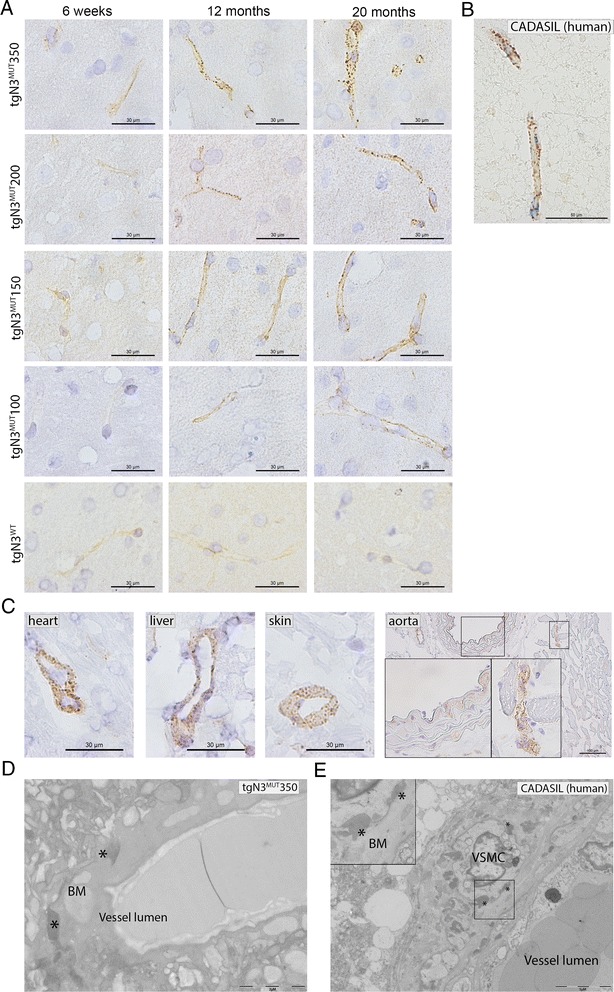Fig. 2.

Vascular NOTCH3 protein accumulation and GOM deposits in transgenic human NOTCH3 p.Arg182Cys mice. a NOTCH3 immunostaining on brain sections of human NOTCH3 transgenic mice. All four tgN3MUT mouse strains developed a characteristic granular NOTCH3 staining pattern in the brain vasculature. TgN3WT mice showed only a weak, diffuse NOTCH3 staining pattern, which did not increase with age (comparable to non-transgenic litter-mates, data not shown). The NOTCH3 accumulation load in the tgN3MUT strains correlates well with the NOTCH3 expression level and increases with age; in tgN3MUT350 mice, first granular staining is already visible at 6 weeks of age; at 20 months of age nearly the whole vessel wall is packed with big granular NOTCH3 deposits. In the strains with a lower NOTCH3 expression level, the NOTCH3 accumulation starts at a later age and the granular deposits remain smaller. b Positive NOTCH3 staining in a brain vessel of a CADASIL patient. c NOTCH3 immunostaining of extra-cerebral arteries of 20-month-old tgN3MUT350 mice showing clear granular NOTCH3 staining in vessels of the heart, liver and skin. The aortic wall shows a diffuse and faint NOTCH3 staining pattern comparable to that seen in non-transgenic littermates, whereas the smaller vessels around the aorta do show characteristic granular NOTCH3 staining. d Electron microscopy on brain vessels from 12-month-old tgN3MUT350 mice shows characteristic electron dense deposits reminiscent of granular osmiophilic material (GOM). GOM deposits were first seen at 5–6 months of age. e Electron microscopy on brain tissue from a deceased CADASIL patient shows pathognomonic GOM deposits, adjacent to the basement membrane surrounding the VSMCs. * = granular osmiophilic material (GOM), BM = basement membrane, VSMC = vascular smooth muscle cell
